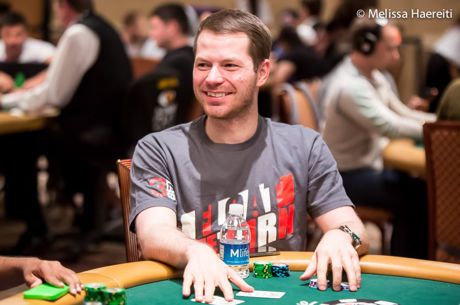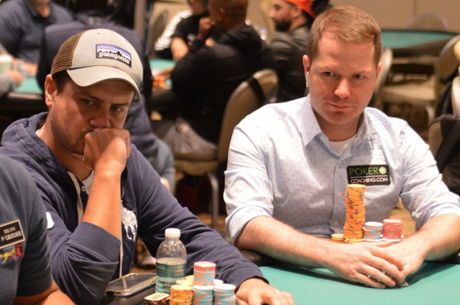Jonathan Little on Extracting Full Value from Strong Marginal Made Hands

When you are against a loose, splashy opponent, make sure you extract full value from your strong marginal made hands. That’s the topic of this week’s strategy column here on PokerNews.
The highlighted hand actually took place at a $1-$3 no-limit hold’em cash game that one of my students showed me. At a seven-handed table with effective stacks of $300, action folded around to a loose/splashy player in the hijack who opened for $10.
We looked down at the A♠10♠ on the button and needed to decide what to do. I think both a call or three-bet is fine, you just have to ask yourself what you expect your opponent to do. If they’re going to four-bet often enough, then you probably just want to call with this hand, which flops decently well. This is one of those hands you don’t mind seeing a flop either multiway or in position heads-up.
I typically call in this spot, but in a smaller cash game like this where my splashy opponent will often call with 8x10x or 9x10x, then you want to three-bet for value. So in this situation, my student did three-bet to $32, both blinds folded, and the original raiser called to see the A♣5♦4♦ flop.
"Remember that even in small-stakes games people fold too often, not to flop bets, not to preflop bets, but they fold way too often to turn and river bets."
The hijack checked and I think it was a nice spot to go for a value bet. I like a small size and my opponent did continue for $25. Even if we missed we could still bluff. Remember that even in small-stakes games people fold too often, not to flop bets, not to preflop bets, but they fold way too often to turn and river bets. So, don’t be afraid to blast them.
The hijack called and the 10♣ turn gave us two pair, the effective nuts. We are now trying to get money in, maybe bet medium on the turn and jam the river, hopefully against a hand with an ace or flush draw. My student bet $70 and got called.
The 4♣ both paired the board and completed the flush draw, but the player in the hijack checked nonetheless. The four is a pretty bad card, but if you think about my opponent’s range, they shouldn’t have too many fours, and now there are even fewer combos for him to have. It’s more likely they have an ace, and the question becomes how much will they call?
Will they call an all in for three-quarters pot with an ace-deuce suited, a hand a loose/splashy player could very well hold. I don’t know, maybe. If you think an opponent will always call say $125 with an ace but will sometimes fold to a jam, then you at least want to consider the former. However, if your opponent will always call with an ace, then just rip it all in.
Personally, I think I would go $125 here, but I don’t fault my student for going all in for $173. The hijack does call off with the A♦7♣ and my student won a $604 pot. Our hero nailed it, nailed the read. This is the type of thing you see a lot of people do, they make top pair and will just not let it go.
My student actually extracted an additional $40 or $50 more in value than I would have.
For a more thorough breakdown of this hand, check out my thoughts in the following video:
Jonathan Little is a professional poker player and author with over $7,000,000 in live tournament earnings. He writes a weekly educational blog and hosts a podcast at JonathanLittlePoker.com. Sign up to learn poker from Jonathan for free at PokerCoaching.com. You can follow him on Twitter @JonathanLittle.









